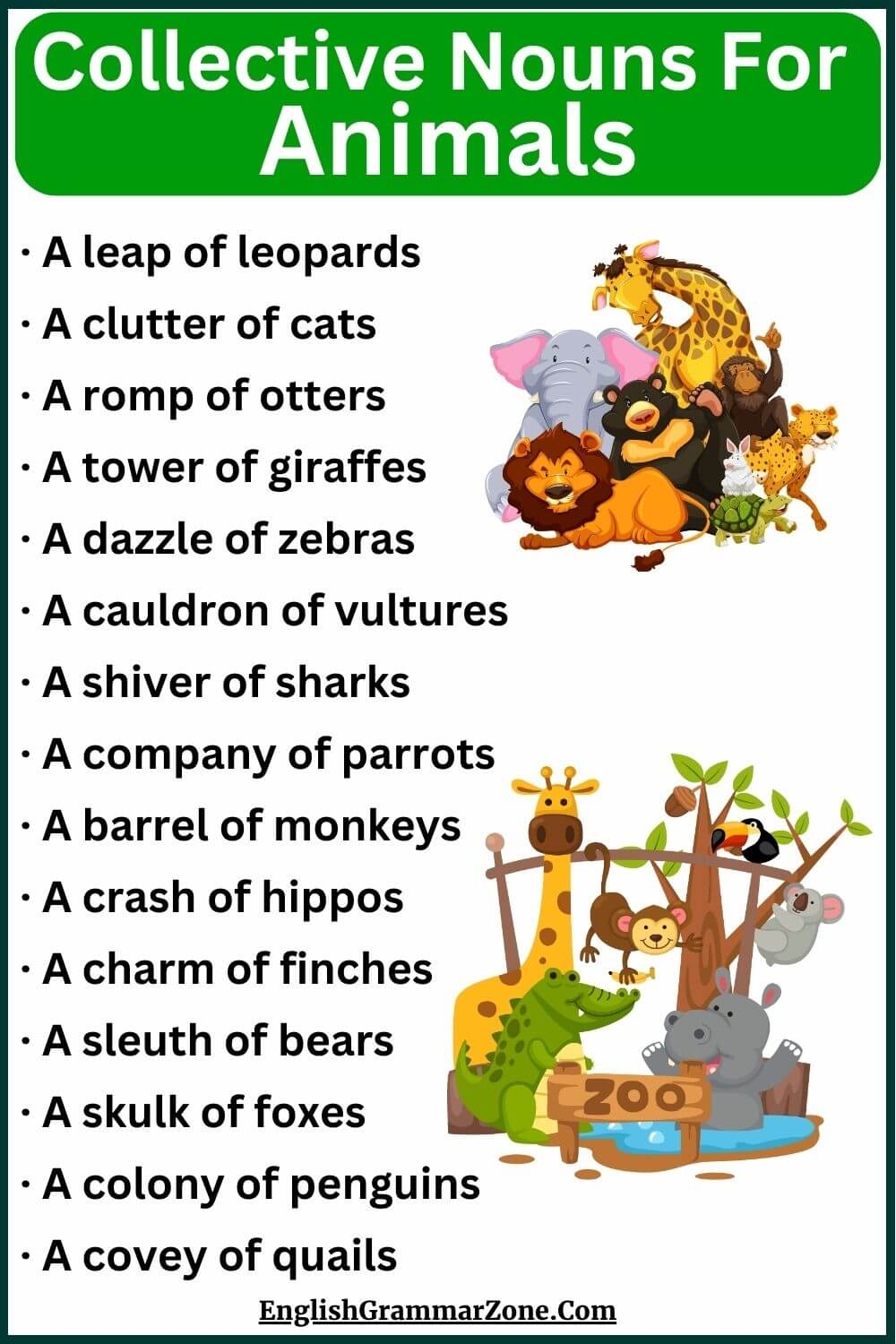Have you ever heard of a murder of crows or a herd of elephants? These are examples of collective animal nouns, which are terms used to describe groups of animals. They add an interesting and sometimes poetic touch to the English language.
Collective animal nouns are often based on the behavior or characteristics of the animals in question. They can range from the mundane to the whimsical, but all serve to paint a vivid picture of the group in our minds. Let’s explore some of the most common collective animal nouns:
List of Collective Animal Nouns
- A pod of dolphins
- A pride of lions
- A swarm of bees
- A pack of wolves
- A flock of birds
One of the most well-known collective animal nouns is “a pod of dolphins.” Dolphins are highly social creatures that travel in groups, or pods, for protection and hunting. Similarly, a pride of lions refers to a group of these majestic cats that live and hunt together in the wild.
On the other hand, a swarm of bees conjures up an image of a large group of buzzing insects working together to collect nectar and pollen. Meanwhile, a pack of wolves evokes a sense of unity and strength as these predators hunt and defend their territory as a cohesive unit.
Lastly, a flock of birds is a common sight in the sky, with various species coming together to travel or feed in unison. The sight and sound of a flock of birds can be both mesmerizing and harmonious, showcasing the beauty of nature’s collective behavior.
In conclusion, collective animal nouns add color and imagery to our language, allowing us to visualize groups of animals in a unique and evocative way. Whether it’s a pod of dolphins swimming gracefully in the ocean or a herd of elephants marching majestically across the savannah, these terms help us appreciate the diversity and unity of the animal kingdom.
